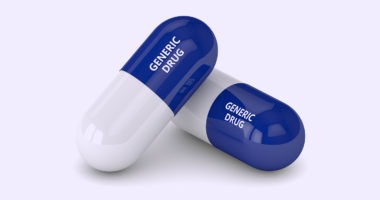US House Drug Pricing Plan: Costs and the Impact on Pharma
The US Congressional Budget Office and the staff of the Joint Committee on Taxation have provided an analysis of the proposed drug pricing plan highlighted last month by US House of Representatives Speaker Nancy Pelosi (D-Calif.). What do they see as costs, savings, and the impact on pharmaceutical innovation?
Proposed drug pricing plan: where it stands
Last month (September 2019), US House of Representatives introduced proposed legislation (H.R.3, The Lower Drug Costs Now Act ) to address the cost of prescription drugs. The plan, which has been criticized by industry trade groups, such as the Pharmaceutical Research and Manufacturers of America (PhRMA) and the Biotechnology Innovation Organization (BIO), would establish a fair price negotiation program, put in protections from excessive price increases under the Medicare program (the US healthcare program for people over the age of 65), and establish an out-of-pocket maximum for enrollees of Medicare Part D (the prescription drug program under Medicare).
Last week (October 11, 2019), the US Congressional Budget Office (CBO), a federal agency within the legislative branch of the US government that provides budget and economic information to Congress, and the staff of the Joint Committee on Taxation (JCR), a nonpartisan joint committee of the US House of Representatives and Senate, offered a preliminary estimate of the effects of Title I of the bill on federal direct spending and revenues related to Part D of Medicare, the outpatient drug benefit. The CBO is working on analyses of other effects of the bill, but that work is not yet complete. For its preliminary analysis, the CBO assumes that H.R. 3 would be enacted near the end of 2019 and that the process of negotiating selected drugs would begin in 2021. The resulting prices would take effect in 2023.
Inside the proposed drug pricing plan
In short, Title I of H.R. 3 would require manufacturers of certain prescription drugs to negotiate prices with the US Secretary of Health and Human Services (HHS). Prices for those drugs could not exceed 120% of the average price in certain other countries (Australia, Canada, France, Germany, Japan and the UK). Other provisions would also affect prices for drugs, including limits on prices of drugs for which international prices are not available. The negotiated prices would be available to all purchasers not just Medicare beneficiaries. If drug manufacturers did not enter into negotiations or agree to prices by specified dates or if they did not meet other conditions, they would be subject to an excise tax of up to 95% of the sales of those drugs. Further details of the proposed plan are outlined below.
Negotiations of drug pricing. One of the key provisions of the proposed plan is to allow the federal government to negotiate pricing for certain drugs. Under current US law, the US Secretary of HHS may not interfere in negotiations between drug manufacturers and prescription drug plans (PDPs) that deliver the Medicare Part D benefit (i.e., the outpatient prescription drug benefit) or require a particular formulary or price structure for PDP payments for drugs. Title I of H.R. 3 would require manufacturers of specific prescription drugs to negotiate with the HHS Secretary for the prices of those drugs or face an excise tax on the sales of those drugs. Those negotiations would be designed to result in what the bill calls maximum fair prices, which would be available to health plans that participate in Medicare Part D and to health plans in the commercial market. The prices would also be available to Part D beneficiaries at the point of sale and to individuals enrolled in commercial insurance plans.
To facilitate the negotiation process, H.R. 3 would grant the US HHS Secretary access to relevant data from manufacturers and other sources. For example, manufacturers would be required to provide the Secretary information about international prices or sales of a specific drug.
The CBO analysis points out that the ability of the US government to seek leverage in negotiations would be key to achieving lower drug prices. “The key factor in determining whether negotiations would lead to price reductions is the leverage that the Secretary [of HHS] would have to secure larger price concessions from drug manufacturers than competing PDPs currently obtain,” said the CBO in its analysis. “Negotiation is likely to be effective only if it is accompanied by some source of pressure on drug manufacturers to secure price concessions. For example, authority to establish a formulary could be a source of pressure. In the absence of such pressure, the Secretary’s ability to issue credible threats or take other actions in an effort to obtain significant discounts would be limited.”
Drug pricing under the proposed plan. Under the proposed legislation, maximum fair prices could not exceed 120% of the average price—called the average international market, or AIM, price—for a given drug in Australia, Canada, France, Germany, Japan, and the UK. The maximum fair price of a drug without an AIM price could not exceed 85% of the average manufacturer price (AMP), which is defined as the manufacturers’ average price charged to wholesalers and pharmacists for the retail class of trade. Thus, drugs without an AIM price would be subject to different rules about prices than other drugs.
H.R. 3 would establish a target price for each drug equal to the lowest price available in any of the six reference countries or 80% of the AMP for a drug without a foreign price. If a manufacturer offered the target price or lower during the negotiation process, that amount would become the maximum fair price.
H.R. 3 would also establish rules for renegotiating maximum fair prices. It also would require payments to the US Treasury when an AIM price for a drug subsequently becomes available for a drug that was initially marketed in the United States but not in any of the reference countries.
Drugs subject to negotiated pricing. Under the proposed legislation, the HHS Secretary would choose at least 25 drugs for negotiation each year beginning in 2021 for maximum fair prices that would be used in Medicare Part D (i.e., the outpatient prescription drug benefit) in 2023. That list would be drawn from the 125 single-source drugs (drugs without generic or biosimilar competitors) with the highest federal spending in Medicare Part D and with the highest net spending in the commercial market (that is, spending net of rebates provided by drug manufacturers). The HHS Secretary also would negotiate prices for insulin products in the first year. In later years, a drug’s maximum fair price would be set to increase by the overall inflation rate and would remain in effect until the drug faced generic or biosimilar competition.
Penalties for drug manufacturers for not negotiating drug prices. Pharmaceutical manufacturers that do not comply with certain requirements of Title I of H.R. 3 would be subject to an excise tax on all sales of the selected drug. The amount of tax would be a percentage of the price of each sale that would start at 65%, would increase by 10 percentage points for each 90 days of noncompliance, and would be capped at 95%. The US Secretary of the Treasury would have the authority under an anti-abuse rule to determine that sales occurred during a day in a noncompliance period if the manufacturer structured sales specifically to avoid the excise tax. Manufacturers would be prohibited from deducting the excise tax payments in determining their income taxes. Thus, the combination of income taxes and excise taxes on the sales could cause the drug manufacturer to lose money if the drug was sold in the US, according to the CBO analysis. The legislation also includes civil monetary penalties for manufacturers that sell drugs at prices higher than the maximum fair price.
The estimated impact on the proposed plan by the CBO is provided below.
Impact of the proposed drug pricing plan
Impact on US federal spending. The CBO estimates that applying the provisions in Title I to prescription drugs covered under Part D of Medicare would reduce federal direct spending for Medicare by $345 billion over the 2023–2029 period (assuming the legislation would be enacted by the end of 2019). JCT estimates that revenue collections from the excise tax in Title I would not be significant. The largest savings would come from lower prices for existing drugs that are sold internationally, for which the price ceiling would be binding in most but not all cases, CBO estimates.
Impact on drug manufacturers. The CBO says that the proposed legislation would directly impact the revenues of drug manufacturers, including limiting resource allocation on research and development (R&D). “The lower prices under the bill would immediately lower current and expected future revenues for drug manufacturers, change manufacturers’ incentives, and have broad effects on the drug market,” said the CBO in a October 11, 2019 letter to Congressman Frank Pallone (D-NJ), Chairman of the House Energy and Commerce Committee and one of the co-sponsors of the bill. “A manufacturer that was dissatisfied with a negotiation could pull a drug out of the US market entirely, though the CBO expects that would be unlikely for drugs already being sold in the United States. Manufacturers would initially set list prices of some new drugs in the US higher than under existing law, although the net prices paid by consumers over time could be lower in many such cases.”
The CBO anticipates that the proposed plan would affect the use and availability of drugs over time. “In the short term, lower prices would increase use of drugs and improve people’s health,” said the CBO in its analysis. “In the longer term, CBO estimates that the reduction in manufacturers’ revenues from Title I would result in lower spending on research and development and thus reduce the introduction of new drugs,” said the CBO in its analysis. Although the CBO has not completed its analysis of the bill’s implications for new-drug development, the CBO’s preliminary estimate is that a reduction in revenues of $500 billion to $1 trillion would lead to a reduction of approximately 8 to 15 new drugs coming to market over the next 10 years. (Note: the CBO estimates that the US Food and Drug Administration approves, on average, about 30 new drugs annually, suggesting that about 300 drugs might be approved over the next 10 years.) “The overall effect on the health of families in the United States that would stem from increased use of prescription drugs but decreased availability of new drugs is unclear,” according to the CBO analysis.
The CBO expects that the negotiation process between the US HHS Secretary and drug manufacturers would have several implications for Medicare Part D plans. First, in many cases, maximum fair prices would be at or below the current net prices that PDPs can negotiate with drug companies. Those PDPs plans might be able to negotiate additional discounts through management tools, including preferred formulary status and prior authorization, as they do under current law. The CBO estimates that those additional discounts would be small. PDPs are not required to cover drugs with maximum fair prices, but the CBO expects that lower prices would make those drugs attractive to plans. Second, maximum fair prices must be available to Medicare Part D beneficiaries at the point of sale. For Title I, the CBO estimated that manufacturers’ discounts would generally continue to be in the form of rebates from drug companies to PDPs, not as reductions to manufacturers’ list prices, and that plans would pass those discounts along to beneficiaries. (Reductions in manufacturers’ list prices would reduce manufacturers’ revenues for sales not subject to the maximum fair price).
International impact on prescription drug prices and product introductions. The CBO expects that enactment of Title I of H.R. 3 would affect prescription drug prices in other countries, with foreign prices expected to rise in response to the link between those prices and prices in the United States. The CBO further expects some new drugs would not be introduced in other countries or would be introduced in a limited set of other countries for which drug manufacturers can sell at sufficiently high prices—an effect that again reflects the feedback by which selling at low prices in other countries leads to lower US prices.
”Over time, drug manufacturers might put in place mechanisms by which they can charge relatively high prices in other countries to avoid feedback that lowers US prices while providing other forms of compensation that effectively reduce the net price of drugs in other countries,” said the CBO in its analysis of the proposed legislation. “Those international effects would lessen the effectiveness of Title I in reducing the level and growth of drug prices.”
Because the legislation would require that manufacturers give a large portion of the US market access to lower prices linked to foreign prices, CBO anticipates that manufacturers would be less willing to offer the same discounts in foreign countries that they do now under current law. The CBO also expects that manufacturers would seek to limit how the discounts that they offer in foreign markets would be reflected in the prices used by the US HHS Secretary in negotiations. The actions of drug manufacturers in foreign countries under the bill would be partially constrained by foreign governments, the CBO expects. For example, those governments might restructure contracts and impose statutory requirements. Such changes could limit changes in net foreign prices or create larger differences between prices used to calculate AIM and net foreign prices actually paid. The CBO also expects manufacturers of new drugs to launch those drugs at higher prices in the United States to compensate, at least partially, for the results of negotiation.








